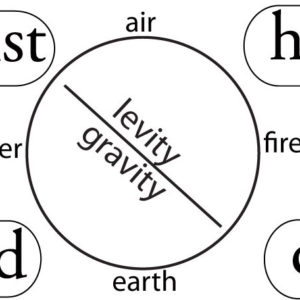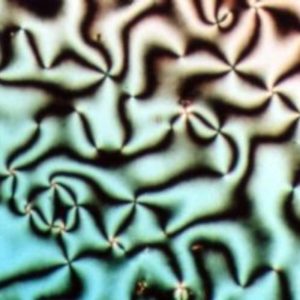Elements, Temperaments and Humors – Part 3
By Dennis Klocek 5 min read
See our video series on Temperaments and Health here.
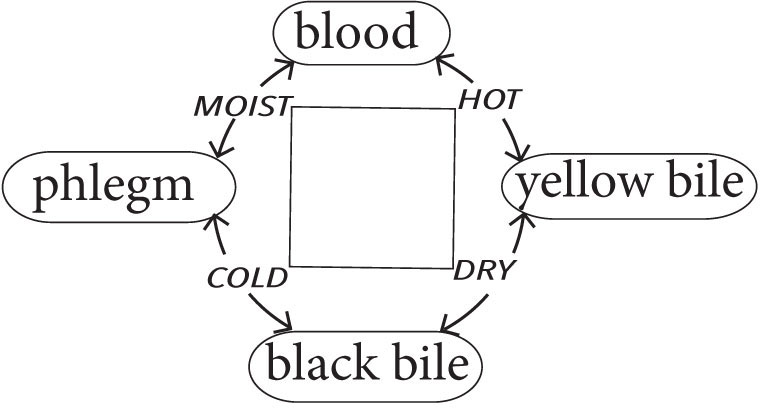
Moist chemically complex phlegm transforms to blood through temperamental heat. This heart action changes phlegm into living interactive tissue. “Cold” blood is available for limited applications. “Warm” heart blood is accepted by all parts of the body, at all levels. Science recognizes oxygenated arterial blood from the lungs but it is heart hormones that give the blood universal entry into cells.
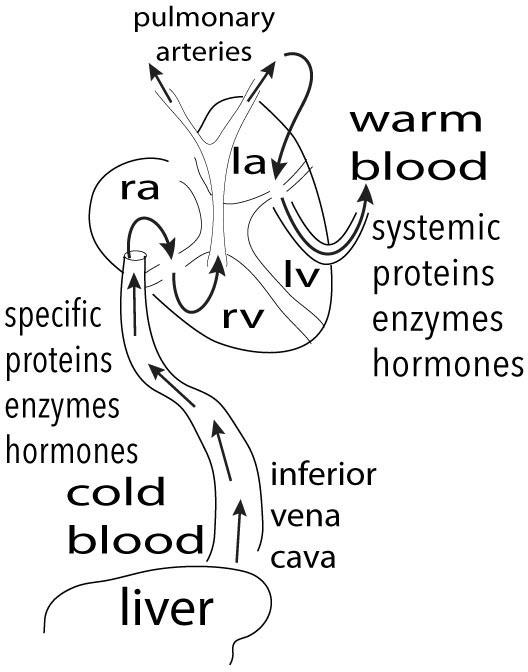
“Cold “ blood with specific proteins, enzymes and hormones is moved from the liver to the heart through the inferior vena cava. Heart hormonal additions transform the enzymatic relationships between glucose and protein. This transformation allows the enlivened blood leaving the heart to the lungs and on to the body to open the protein gates present in every phospholipid cell membrane.
Heart hormonal warming or quickening is the door to balancing cellular metabolic needs and the blood’s ability to meet them. Through interaction with all cells the “warm” blood completely “matures”. The energy for this maturation is taken from the secretions of the spleen, pancreas, liver and gall in the production of bile salts that emulsify fats present in the lymph of the vascular system.
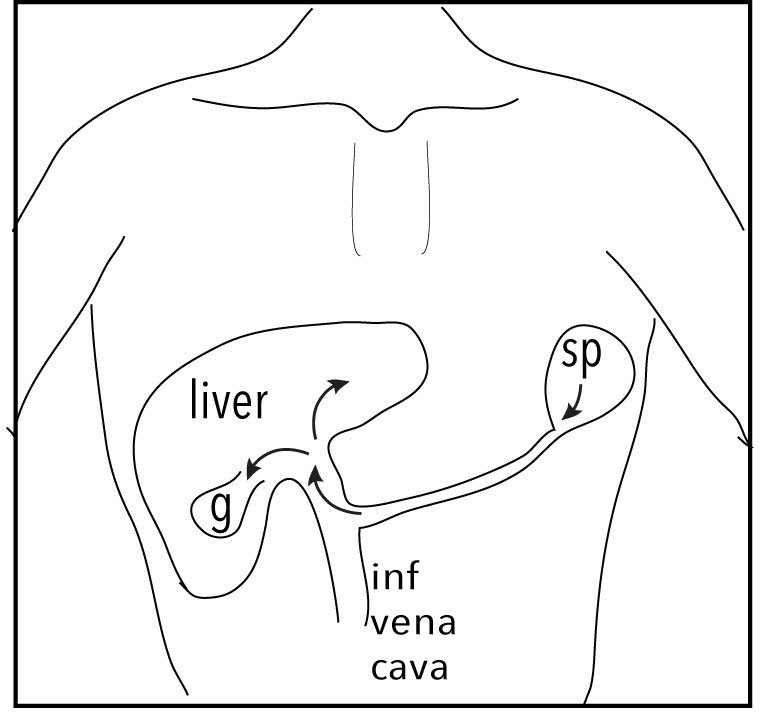
The cooked blood from the heart contains water shunning, temperamentally dry, oils or lipids. Oils, as hydrocarbons shun water and must be tempered to interact with water soluble substances. The spleen harvests spent blood cells and begins the process of bile salt formation. Bile salts, along with hormones and enzymes travel to the liver also in the inferior vena cava. They are then stored in the gall bladder. They are rich in salts and acids that break down lipids. The breakdown is a form of “burning” that “dries” the oils out by reducing them to free fatty acids. These acids can then interact with water to enter the cells.
Oils that are ingested are not broken down by stomach acids and pass through the stomach mostly unchanged. As they exit the stomach the gall bladder injects bile salts in order to dissolve the fats into fatty acids. The fatty acids are absorbed into the lymph system, moved directly to the heart and then circulated throughout the body. Lymph fats in the blood plasma can easily approach lipid based cell membranes and from there support the innate heat of cellular metabolism.
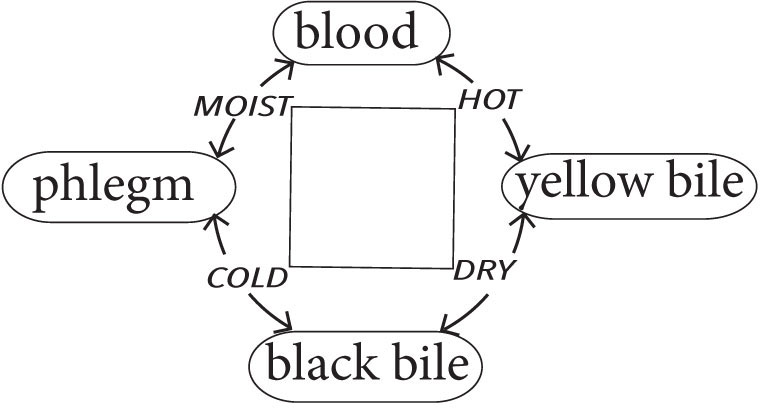
The image shows a mandala using Avicenna’s terms for these temperamental activities. In the salt / acid pole the cold and dry temperaments produce the humor of black bile. It is composed of salts and acids that the body can no longer circulate or utilize. Black bile results from improper nutrition at any stage in the temperamental digestive circulation of blood and lymph. Too much of one temperament or another, or in the improper sequence creates the potentials for undigested inflammatory salts and acids to accumulate in body fluids.
Along with the black bile salts are true bile salts that can recirculate through the fluid systems to nourish cell metabolism. These salts in solution are the basis of the humor phlegm. The moist and cold temperaments meet in the production of phlegm that contains water soluble metals and minerals. The phlegm contains much of what is needed for the liver to transform the raw materials of digestion into nutritive carbohydrates and proteins.
The liver passes the cold and moist phlegm to the heart where the moist and hot temperaments meet that produce blood. The blood, along with protein peptides (amino acids)has in addition emulsified fats from the spleen, liver and gall activity. Avicenna calls these available fats yellow bile. We might call them essential fatty acids. They provide digestive energy for cellular metabolism.
The lymph system carries these oils through the whole body to support innate metabolic heat in each cell. Through metabolic heat the water avoiding oils “dry” the blood into the physical cytoplasm of organs. Good salts form good(responsive) cytoplasm and can eventually return to the liver. Bad (undigested or ash like) salts go back into the blood to be dried out further by the kidneys and removed from the circulation. The result is black bile that becomes excretions of urine and feces. Strangely there are relatively few references in western traditional medicine to the more widespread lymph / spleen influence and its impact on immune function.
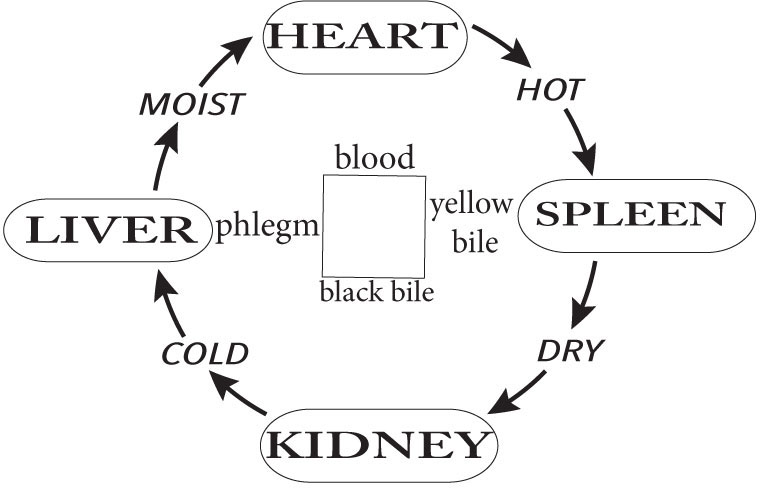
In western traditional medicine, temperaments are often linked to specific organs. They even can be used as psychological types. The lung is the consciousness of melancholia. This is because the lung is focused on carbon or earth, a gravity laden consciousness. The liver consciousness is phlegmatic with a focus on the liquid elements that create phlegm. The heart is the seat of the choleric consciousness as the ruler of the blood. The sanguine temperament is linked to the kidneys the organs that are deeply aware of minute changes in blood constituents.
The system used by many western practitioners omits the function of the spleen, pancreas and gall bladder a key to the diagnostics of Avicenna. In eastern traditional medicine the four temperaments are used to form diagnoses as well as formulating remedies. However, a critical feature of both western traditional medicine and Avicenna points to a slightly different way of looking at the temperaments.
Rudolf Steiner used the western system. But a bridge from his work to Avicenna is the idea that the true human spirit or “I” lives in the warmth of the blood. Avicenna felt that regulating and tempering the innate warmth of the blood is the most fundamental issue in healing. The innate heat of Avicenna that is, the metabolic potential of a cell, is known to alchemists as solar force. Rudolf Steiner would call the solar influence “etheric” or “life force”.
In contrast to the solar influence is the cool deposition processes that lead to excretion. Alchemy would call these lunar forces. Rudolf Steiner would call the lunar forces astral or soul forces. To bring these alchemical ideas into perspective an organology of temperamental character traits can be based on how the soul (moon) perceives the warmth (sun) in the blood. The intent is to link two geniuses, Rudolf Steiner and Avicenna.

Dennis Klocek
Dennis Klocek, MFA, is co-founder of the Coros Institute, an internationally renowned lecturer, and teacher. He is the author of nine books, including the newly released Colors of the Soul; Esoteric Physiology and also Sacred Agriculture: The Alchemy of Biodynamics. He regularly shares his alchemical, spiritual, and scientific insights at soilsoulandspirit.com.
Similar Writings
Elements, Temperaments and Humors – Part 1
Traditional medicine makes use of the principle of tempering. Tempering is the incremental application of small changes that gradually establish order through proportional balance. This is achieved by repeated actions applied in small incremental steps. Among plant medicines, potent herbs known as adaptogens (spikenard, ginseng, eleuthero, rhodiola) are valued for their tempering forces. In music,…
Healing with Liquid Crystal Communication
An understanding of cellular communication based on light waves is used to develop a healing gem gel for counteracting the clouds of microwaves generated by our modern technology.
